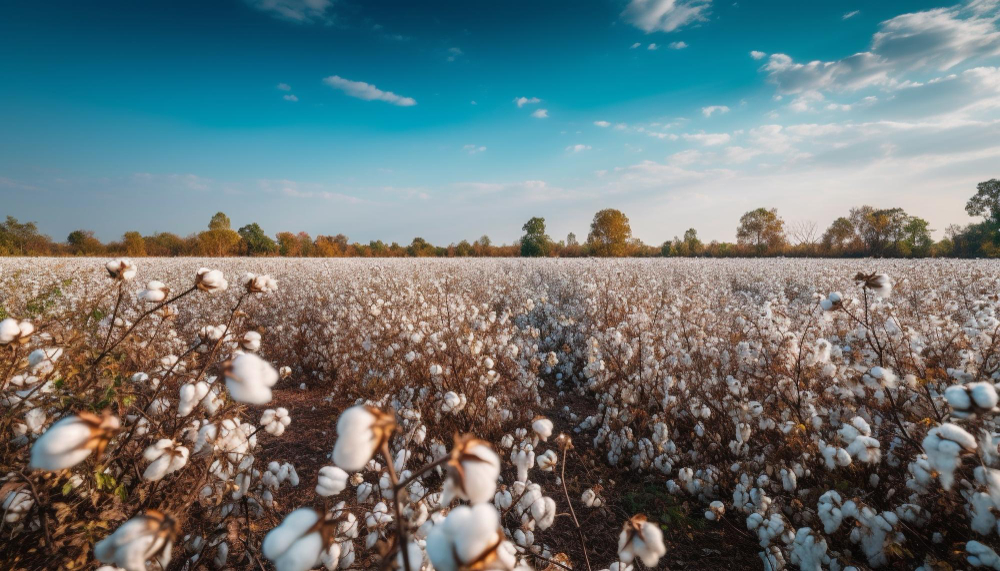The Evolution of Cotton Harvesters: Past, Present, and Future
Cotton, often referred to as “white gold,” has significantly shaped economies and cultures worldwide for centuries. From its origins in ancient civilizations to its modern-day industrial cultivation, cotton harvesting has undergone a remarkable evolution. At the heart of this evolution lies the cotton harvesting machine, a technological marvel that has revolutionized how cotton is harvested. In this blog, we will delve into the past, present, and future of cotton harvesters, exploring the journey of this vital agricultural equipment.
The Past: Manual Labor and Early Mechanization
The history of cotton harvesting stretches back thousands of years, with evidence of its cultivation dating back to ancient civilizations such as the Indus Valley and Mesopotamia. In these early times, cotton was primarily harvested by hand, a labor-intensive process that required vast amounts of human effort.
Eli Whitney’s invention of the cotton gin in 1793 marked a significant milestone in cotton harvesting technology. While the cotton gin revolutionized the process of separating cotton fibers from seeds, harvesting itself remained a manual task well into the 19th century. Laborers, often enslaved individuals in the American South, picked cotton by hand, a grueling and inefficient process that limited the scale of cotton production.
The first mechanized cotton harvesters emerged in the late 19th and early 20th centuries, driven by the need to increase efficiency and reduce labor costs. Early cotton harvesting machines were rudimentary compared to their modern counterparts, often consisting of simple mechanical devices attached to horse-drawn carts. These early machines could pick cotton from the plants, but they were slow, prone to breakdowns, and limited in their effectiveness.
The Present: Technological Advancements and Precision Agriculture
The latter half of the 20th century witnessed dramatic advancements in cotton harvesting technology, paving the way for the modern cotton harvester. One of the most significant developments was the advent of mechanical cotton pickers in the 1940s and 1950s. These machines, powered by internal combustion engines, could harvest cotton more efficiently than ever before, dramatically reducing the need for manual labor.
Today, cotton harvesting machines have evolved into highly sophisticated pieces of equipment equipped with advanced technology and automation features. Modern cotton harvesters, often referred to as cotton picking machines or cotton strippers, come in various configurations depending on the type of cotton and the conditions of the field.
Cotton pickers utilize rotating spindles or bars to pluck cotton bolls from the plants, while cotton strippers employ rollers or brushes to strip the cotton from the bolls. These machines are equipped with onboard sensors, cameras, and GPS technology to optimize harvesting efficiency and minimize waste. Advanced models can adjust their real-time harvesting parameters based on factors such as crop density, moisture levels, and boll maturity.
Furthermore, the integration of precision agriculture techniques has revolutionized cotton harvesting practices. GPS-guided navigation systems enable cotton harvesters to operate with unparalleled accuracy, ensuring precise harvesting while minimizing crop and soil compaction damage. Data-driven insights gathered during harvesting can also inform agronomic decisions, allowing farmers to optimize yields and resource utilization.
The Future: Innovations and Sustainability
Looking ahead, the future of cotton harvesting holds exciting possibilities driven by ongoing technological innovations and a growing emphasis on sustainability. Researchers and engineers are continually exploring new avenues to improve the efficiency, environmental impact, and economic viability of cotton harvesting machines.
One area of focus is the development of autonomous cotton harvesters capable of operating without human intervention. By leveraging artificial intelligence and machine learning algorithms, autonomous harvesters can navigate fields, identify ripe cotton bolls, and adjust harvesting parameters autonomously. This technology has the potential to revolutionize cotton farming by reducing labor costs, increasing harvesting efficiency, and enabling round-the-clock operation.
Furthermore, cotton harvesting practices are increasingly emphasizing sustainability and environmental stewardship. Innovations such as precision irrigation, cover cropping, and soil health management are being integrated into cotton farming systems to reduce water usage, minimize soil erosion, and enhance ecosystem resilience.
Additionally, material science and engineering advancements are enabling the development of lighter, more durable, and energy-efficient cotton harvesting machines. Electric and hybrid-powered harvesters are emerging as viable alternatives to traditional diesel-powered models, offering reduced emissions and operating costs.
Conclusion
The evolution of cotton harvesters from rudimentary manual devices to sophisticated, high-tech machines reflect the ongoing quest for efficiency, productivity, and sustainability in agriculture. From the early days of handpicking to the era of autonomous harvesting, cotton harvesting technology has come a long way, reshaping the cotton industry and transforming the lives of farmers around the world.
As we look to the future, the continued innovation and adoption of advanced technologies promise to further enhance the efficiency, sustainability, and profitability of cotton farming. By embracing these innovations and collaborating across disciplines, we can ensure that cotton harvesting remains not only a vital component of global agriculture but also a beacon of progress and prosperity for generations to come.


















